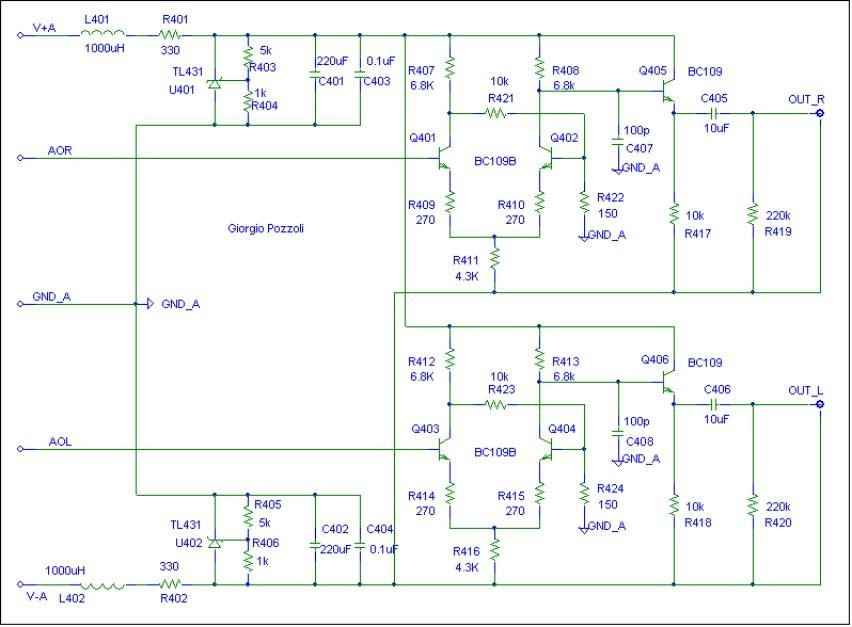According to one DAC manufacturer's website there are gains to be made depending on how you couple the output stage of your TDA1541 DAC. It goes onto say,
Using the output stage on the TNT website as an example you can see the standard approach of coupling with good quailty capacitors (i.e. C405, C406). Now to transformer couple I understand the concept of just replacing C405 and C406 with the proper coupling transformer from Sowter or the like. What I don't understand is the method of direct coupling mentioned above and it's pros and cons.
Regards,
Dan

transformers as coupling devices are sonically superior to capacitors but, as good as they are, a direct coupling can be still better.
Using the output stage on the TNT website as an example you can see the standard approach of coupling with good quailty capacitors (i.e. C405, C406). Now to transformer couple I understand the concept of just replacing C405 and C406 with the proper coupling transformer from Sowter or the like. What I don't understand is the method of direct coupling mentioned above and it's pros and cons.
Regards,
Dan

I would try a resistor from Iout to a quiet V+ or V- , don't remember, for sure someone can help you...
Here's an explanation (I think) of a direct coupled output.
Regards,
Dan
Direct coupled outputs provide incredible bass enhancement. There are no capacitors anywhere in the signal path, resulting in a linear response all the way down to DC (0 Hz!). An actively maintained low output offset is achieved through a DC Servo Loop. The DC component of the output signal is continuously corrected to maintain zero volts DC without the use of high loss and sound blocking capacitors.
Regards,
Dan
A DC servo circuit is not equivalent with a DC coupled circuit. There is a pole somewhere... See Post #11 of the Less simple I/V thread.
It is possible to DC-couple the TDA1541A by injecting 2 mA (slightly adjustable) current into its output.
It is possible to DC-couple the TDA1541A by injecting 2 mA (slightly adjustable) current into its output.
What? The output does not go through a cap or anything... it is DC coupled. A DC coupled circuit is the only instance I can think of where you would even want to use a servo...oshifis said:A DC servo circuit is not equivalent with a DC coupled circuit. There is a pole somewhere... See Post #11 of the Less simple I/V thread.
It is possible to DC-couple the TDA1541A by injecting 2 mA (slightly adjustable) current into its output.
There is always a capacitor in the servo integrator amplifier so that the loop gain of the DC error signal is very high. The loop gain will fall above a certain frequency. If you remove that capacitor, the audio signal will be also considered as an error signal and will be nulled at the output.
Since there is a pole, there is also phase shift. I have a feeling that the type and quality of the integrating capacitor does matter, just like that of an output coupling capacitor. The only difference is that it is in the feedback path, not in the forward path. But I am interested in others' opinions.
Since there is a pole, there is also phase shift. I have a feeling that the type and quality of the integrating capacitor does matter, just like that of an output coupling capacitor. The only difference is that it is in the feedback path, not in the forward path. But I am interested in others' opinions.
- Status
- Not open for further replies.
- Home
- Source & Line
- Digital Source
- TDA1541A Output Coupling?